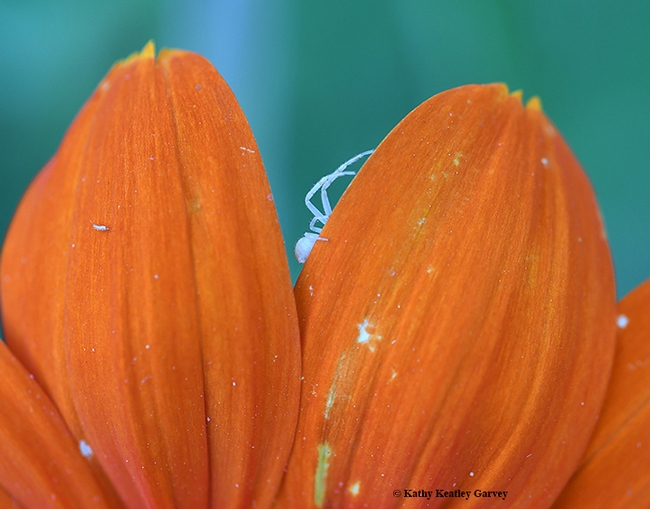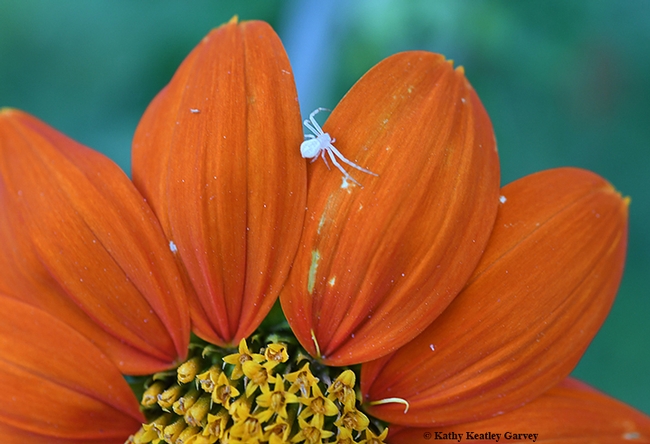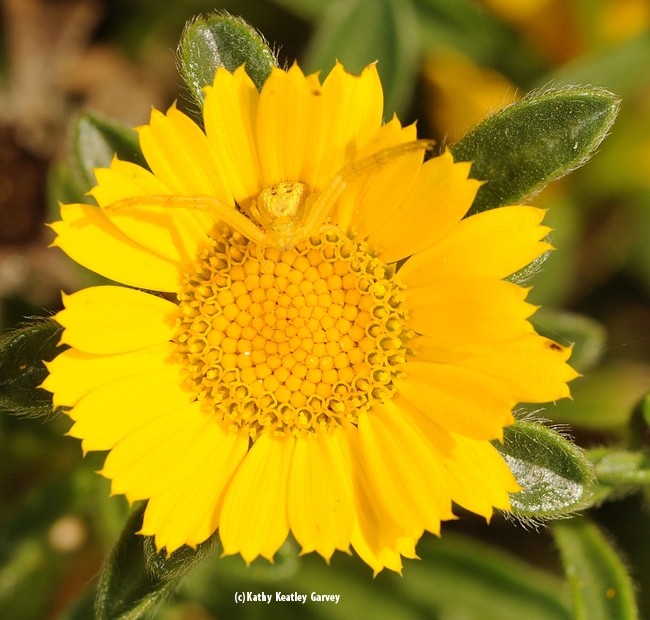The itsy bitsy spider climbed up the water spout.
Down came the rain and washed the spider out.
Out came the sun and dried up all the rain
and the itsy bitsy spider climbed up the spout again.
--Nursery Rhyme
It was an itsy bitsy spider.
But it wasn't climbing up a water spout.
It was lurking, waiting for prey, on our Mexican sunflower.
This particular crab spider was quite visible--white on orange. Sometimes they're so camouflaged that you have to look twice to see them. We remember the perfectly camouflaged crab spider on a gold coin flower (Asteriscus maritimus). (See below).
Crab spiders belong to the family Thomisidae, which includes about 175 genera and more than 2100 species. Wikipedia tells us that "The common name crab spider is often applied to species in this family, but is also applied loosely to many other species of spiders. Among the Thomisidae, 'crab spider' refers most often to the familiar species of 'flower crab spiders,' though not all members of the family are limited to ambush hunting in flowers."
Attached Images:

Yes, we can see you. A crab spider on Mexican sunflower (Tithonia). (Photo by Kathy Keatley Garvey)

The crab spider ventures out on a petal of the Mexican sunflower (Tithonia). (Photo by Kathy Keatley Garvey)

A perfectly camouflaged crab spider on a gold coin flower (Asteriscus maritimus). (Photo by Kathy Keatley Garvey)